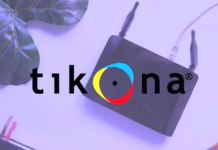
Technology is opening new possibilities in education. Technology can create new forms of learning, increase access to teachers and provide information real time. As the education sector continues to embrace the power and promise of digital learning and the best that ed-tech has to offer, it is still limited by the lack of broadband and mobile connectivity.
Digital India initiative can give an impetus to education technology by first increasing the broad band and mobile penetration massively.
Government’s National OpenFibre Network can catalyze the growth of digital education by providing the right infrastructure for such initiatives.
With the increased penetration, the inclusiveness will increase tremendously. Digital Education models will increase reach as well as make it more affordable. Also, the government has come out with initiatives such as e-education, e- basta which impart education in remote areas using mobile – apps , internet and tablets.
There are increasing trends in education which enable the students to learn from home itself and reduce or eliminate the need to go to a tutor.
Good network can encourage success of MOOCs and formats where best faculty cast videos from their own centers . Students can then attend the classes from their home itself. This can immediately lift the quality of education across the country where there is little availability of quality teachers.
Personalized digital learning platforms such as Khan Academy allow students to learn at their own pace. Also, students can receive continuous feedback as the performance is tracked continuously. Third largest number of users on Khan Academy are Indians indicating the huge demand for such a platform.
Apps such as doubnut make studies much more efficient and eliminate or the need to go to the tutors.. With the absence of peer group and classes with actual teacher to student ratio of about 1: 100, it is virtually impossible to get help on individual doubts. One held up doubt can be a big impediment in continuing to study further and can have a huge domino effect. This is where technology comes in handy. On doubtnut ,students can ask the doubt at the very moment they encounter it. All they have to do is to take a picture of the question and upload it. At the other end, one of the doubtnut experts makes a video solution of it and delivers it in –app. It suddenly expands the pool of coaches or tutors available to any one student. This uberification of peers, tutors , coaches provides almost real time access to students for individual help. Also, fast internet help in delivering video solutions or tutorials through an app. Studies is no longer at the mercy of the availability of a teacher you know personally or is available close by.
Devices and apps can also be useful for vocational courses such as learning languages. The app Hello English from the company CultureAlley is the number one English Learning and Speaking App on India Google PlayStore. The platform teaches the language through games and quizzes.
Flipped class – a form of blended learning where students watch video lectures outside of class to learn content online, and then do their homework in class with the guidance of teachers in person. Such formats definitely reduce the frequency of the visits to the tuition centers. They need to go there only for problem solving or their individual doubts.
There are solutions where not only theory but experiments can also be done remotely. Virtual labs is one such example which provides complete system including lectures and video demonstrations.
Game Based Learning uses our competitive drive and the kick that one gets from reaching a goal. Qualcomm and Sesame workshop are integrating content into the curriculum through games on devices. The research has shown that there has been significant improvement in language, comprehension and numerical skills.
There is a the huge diversity of language and state currricula in India. Good penetration of technology can help provide content in local language to address this. Infact, there are efforts on with Khan Academy to develop the Khan Academy- Hindi Platform. Also, government had launched National Repository of Open Educational Resources to create a repository of content in a lot of languages.
Technology not only helps students in enhancing the learning but also the teachers in increasing their skill. There is a huge lack of training for teachers. Technology enables teachers to connect with peers as well as receive coaching remotely from their homes. The remote content includes reading, videos and assessments. An NGO in Thane, QUEST hosts courses for mathematics teaching with videos, peer support and online coaching. Platforms such as Youtube can be used to host the videos for good teaching pedagogy coupled with a discussion forum for teachers.
The initiative will truly help in attaining the education for all mission.
Article attributed to Mr. Aditya Shankar, Founder at Class 21A




























